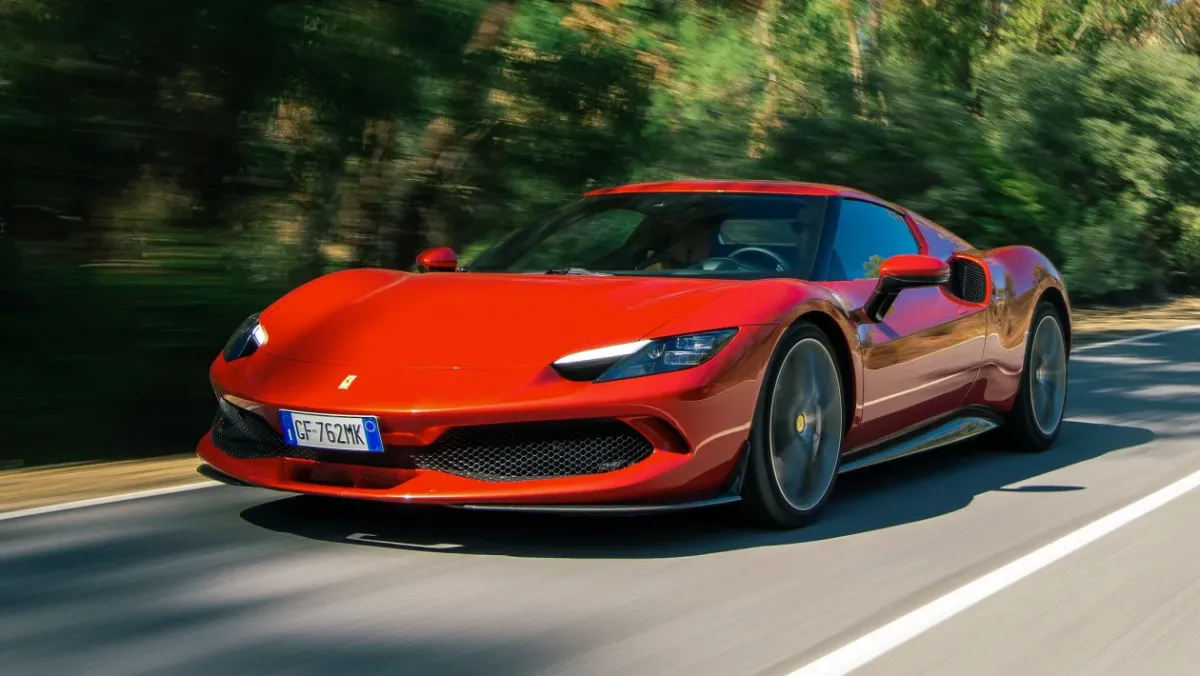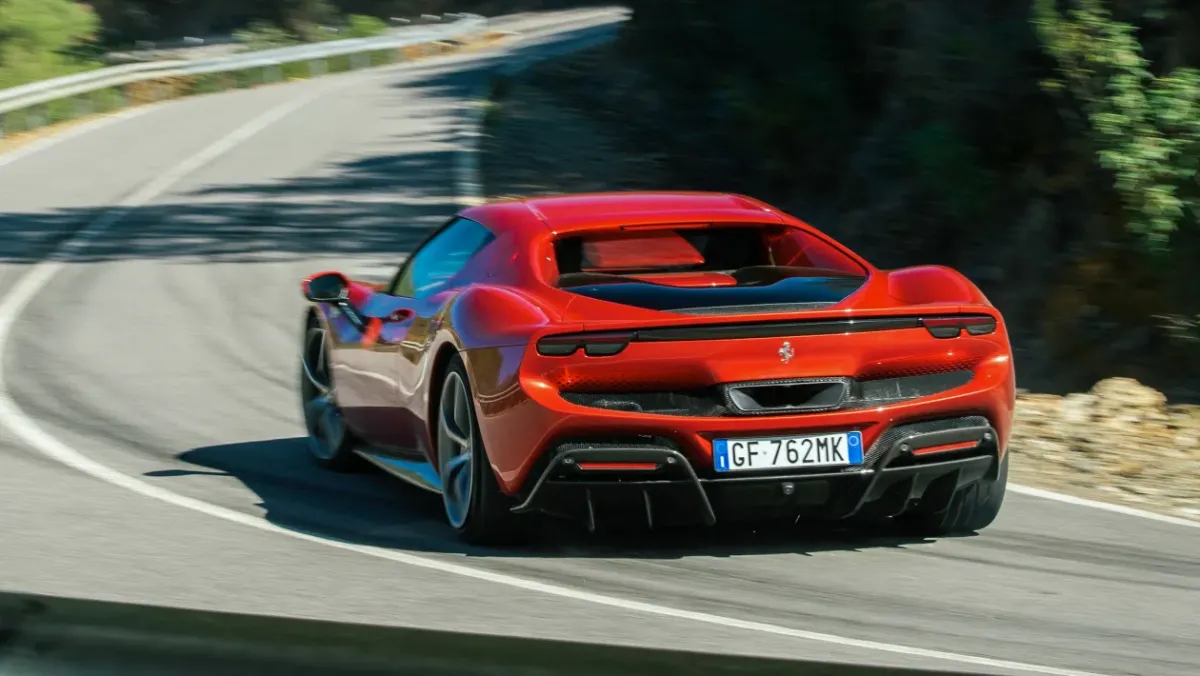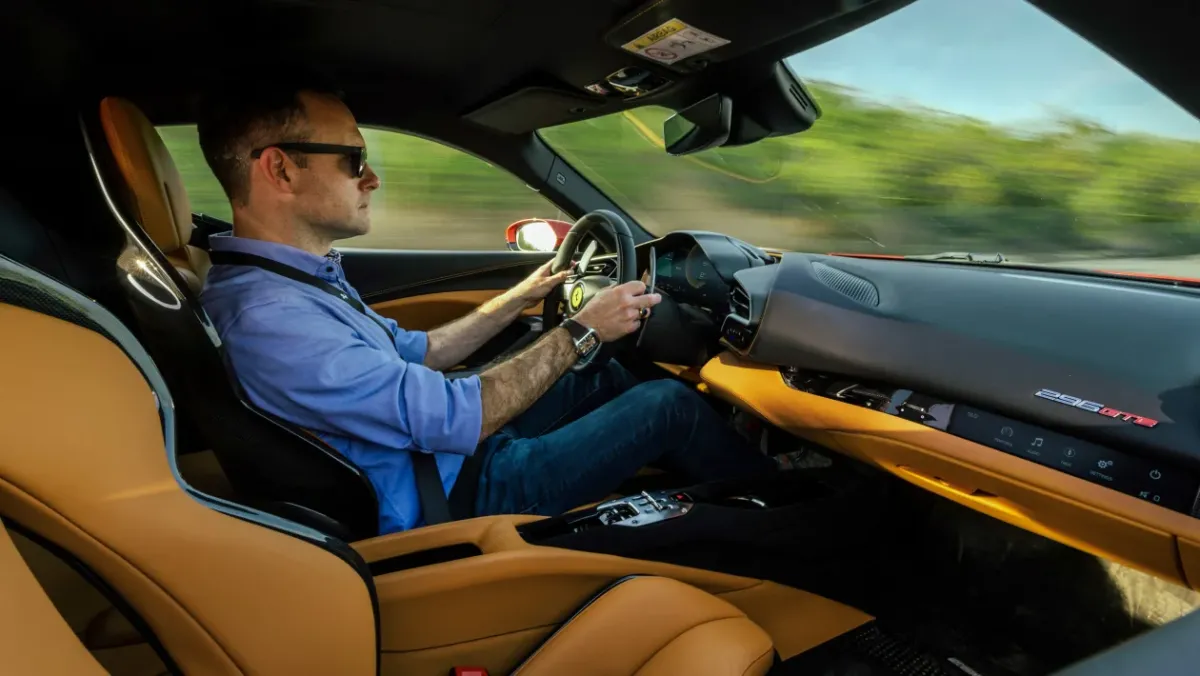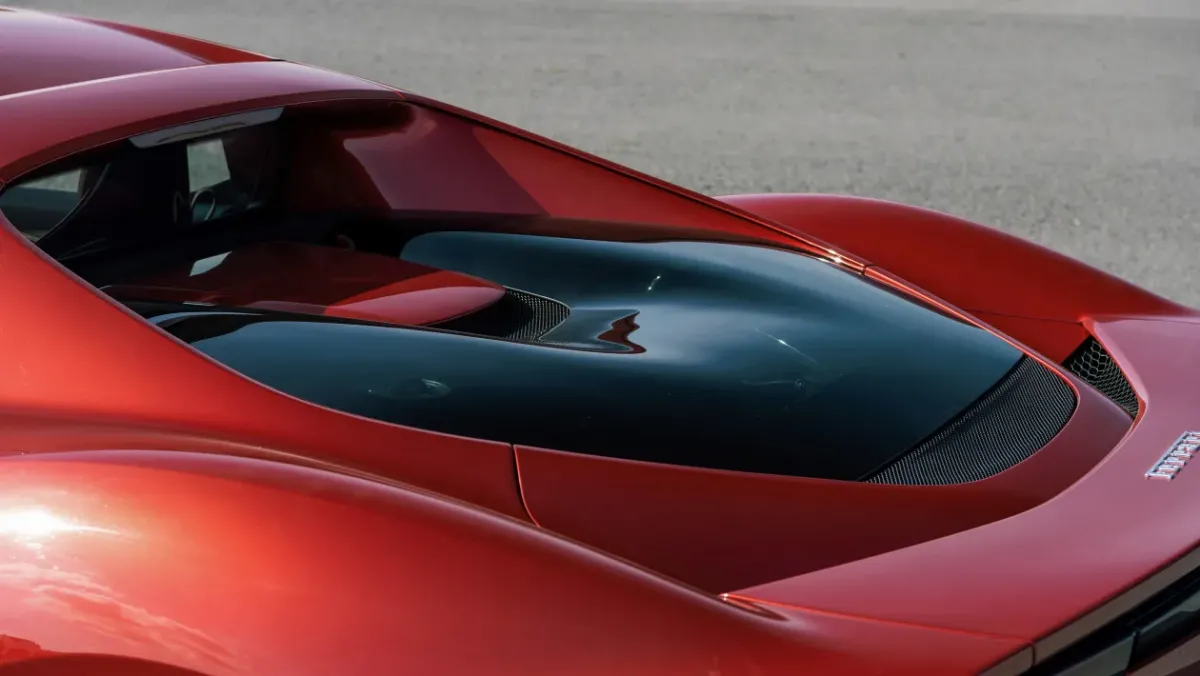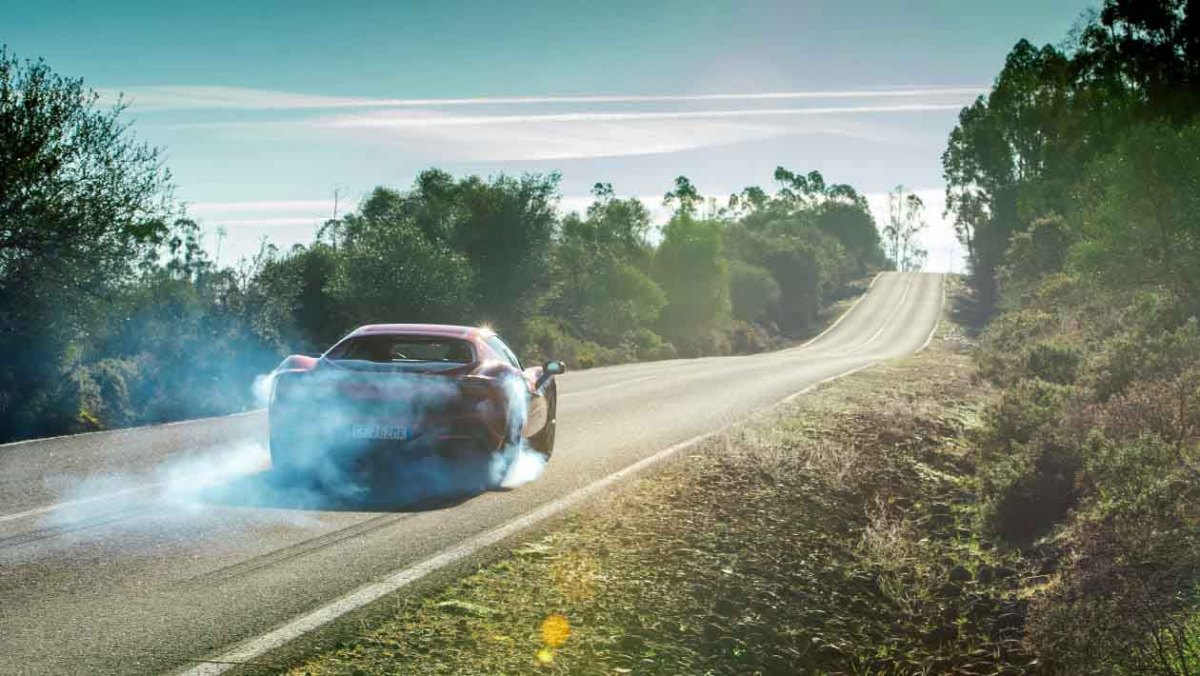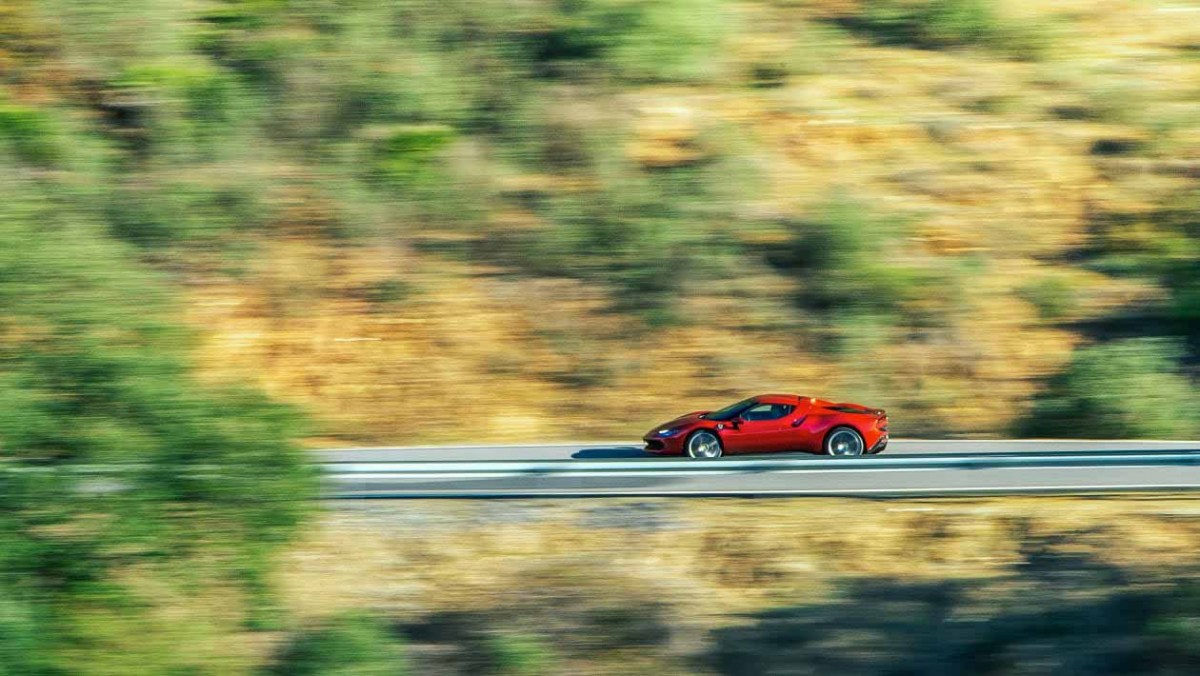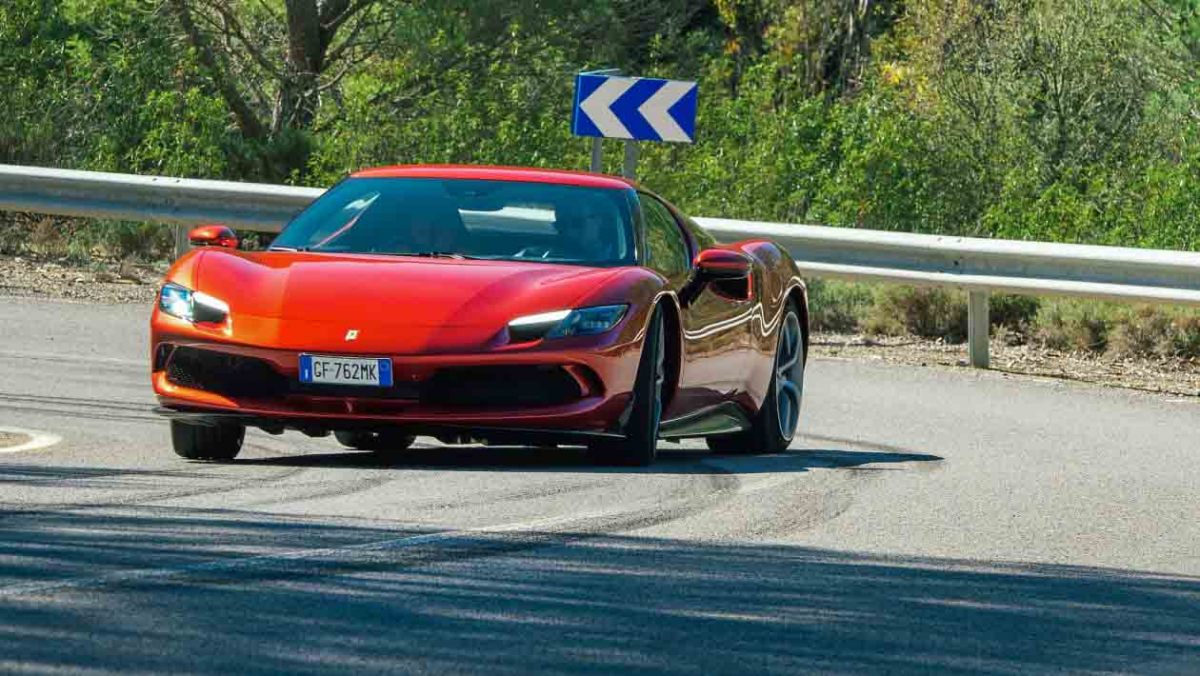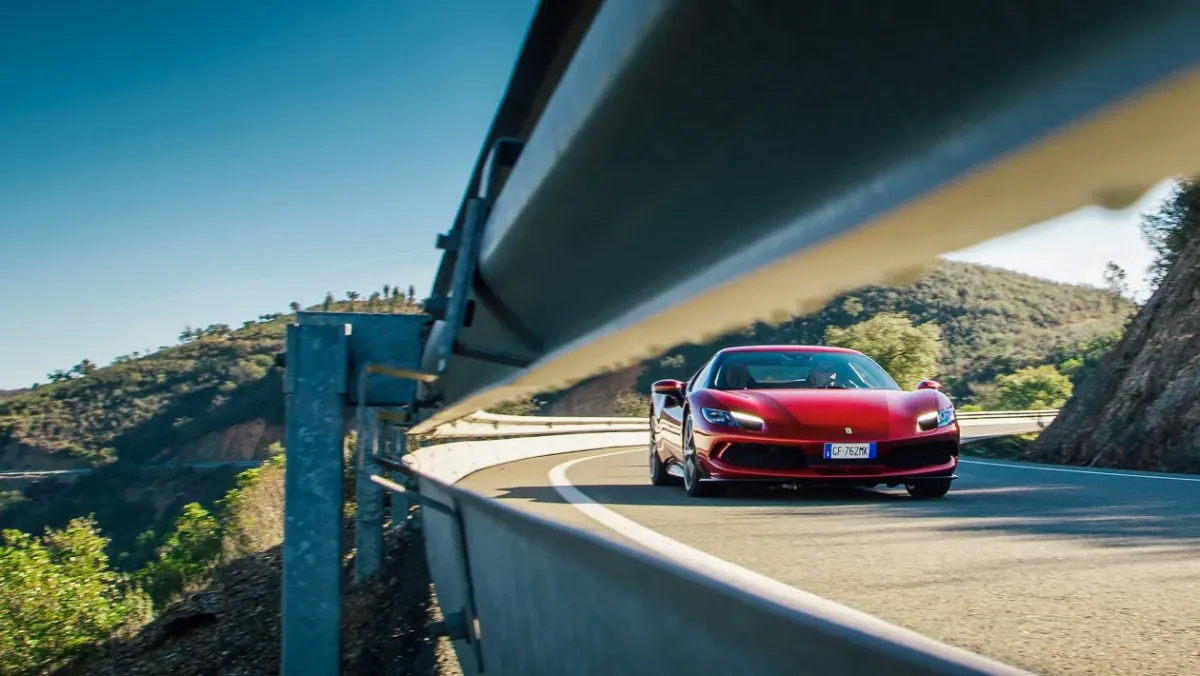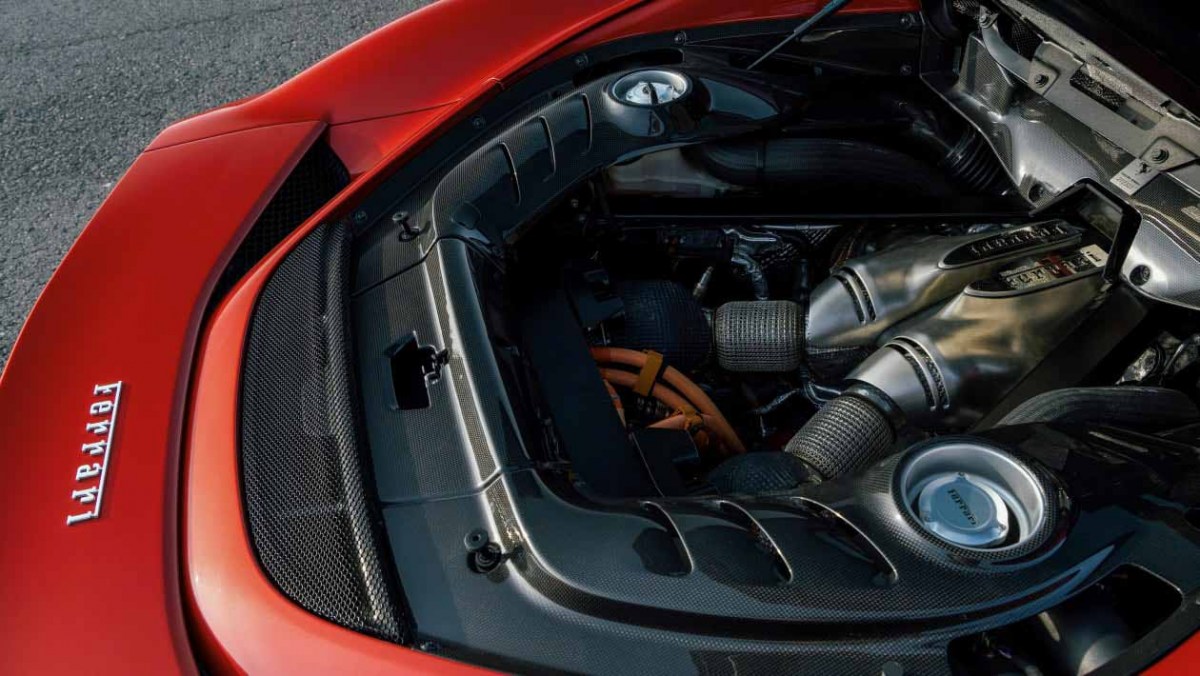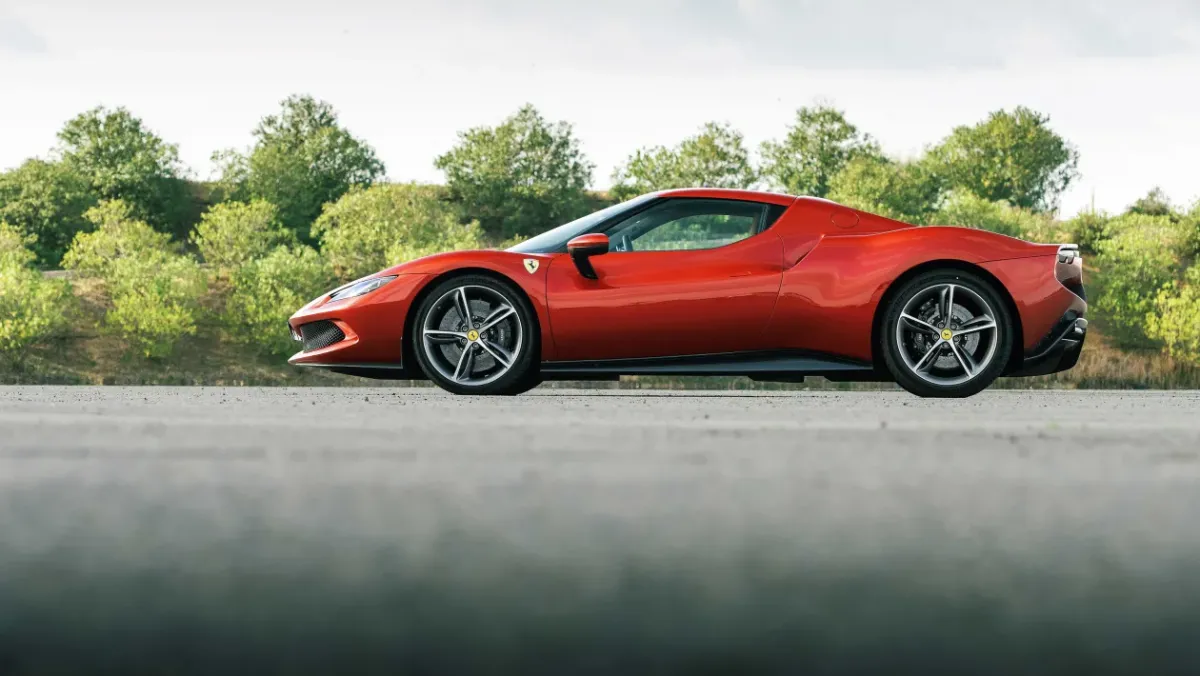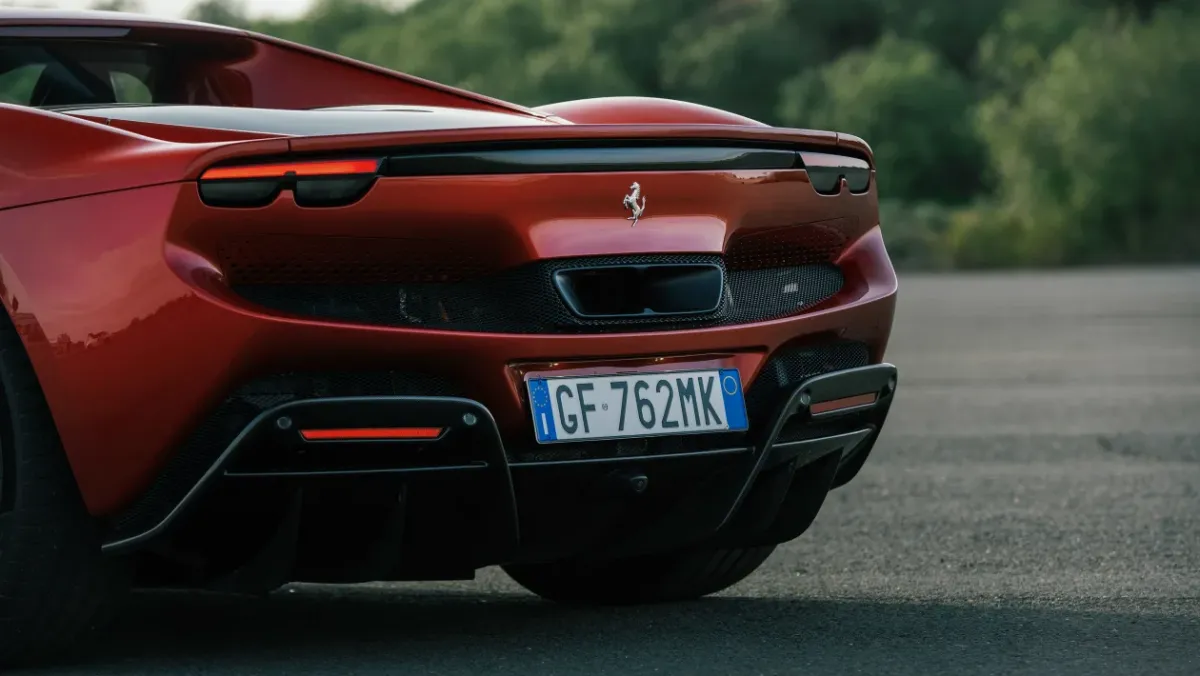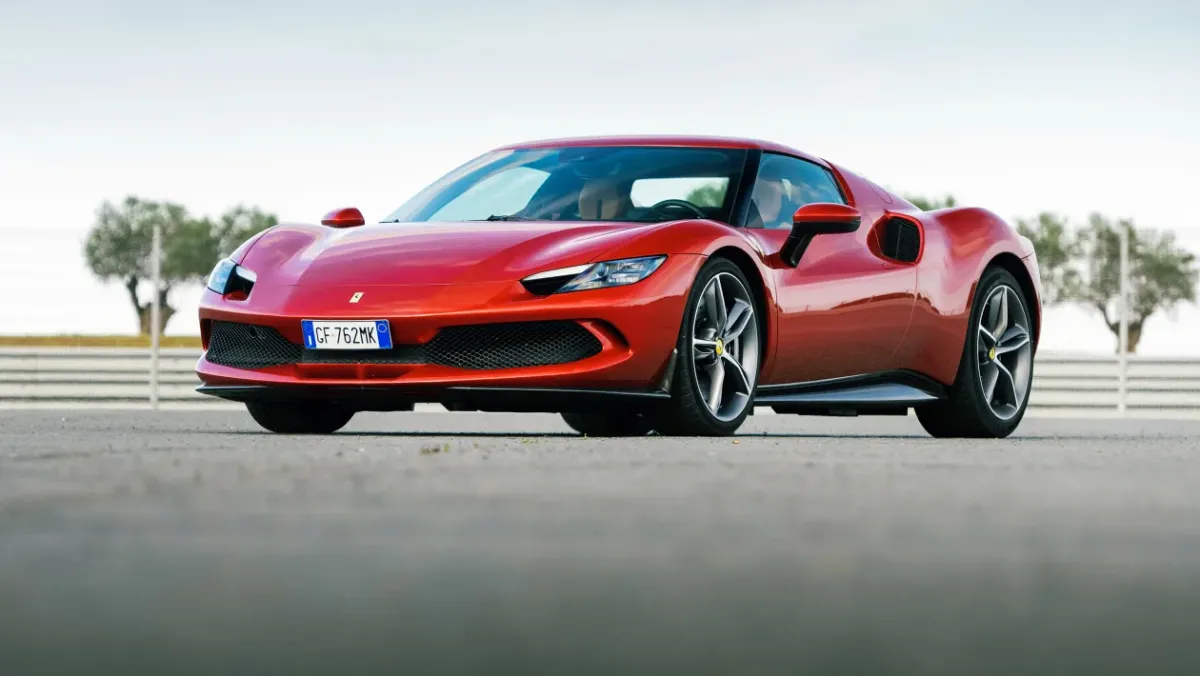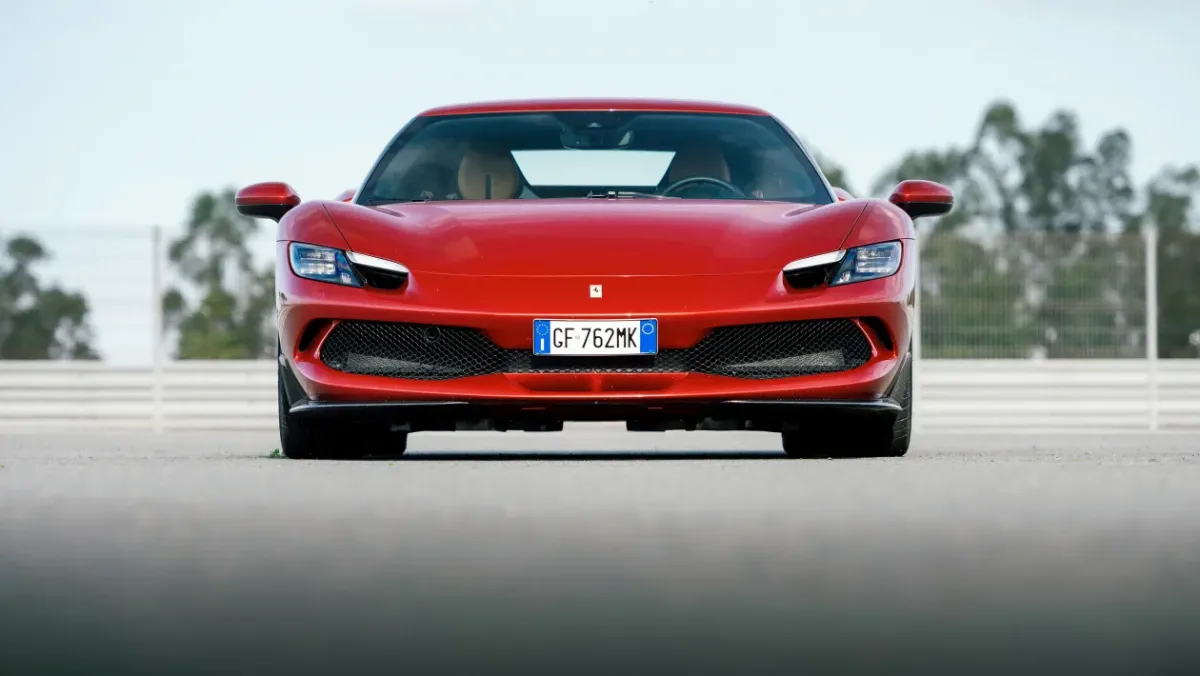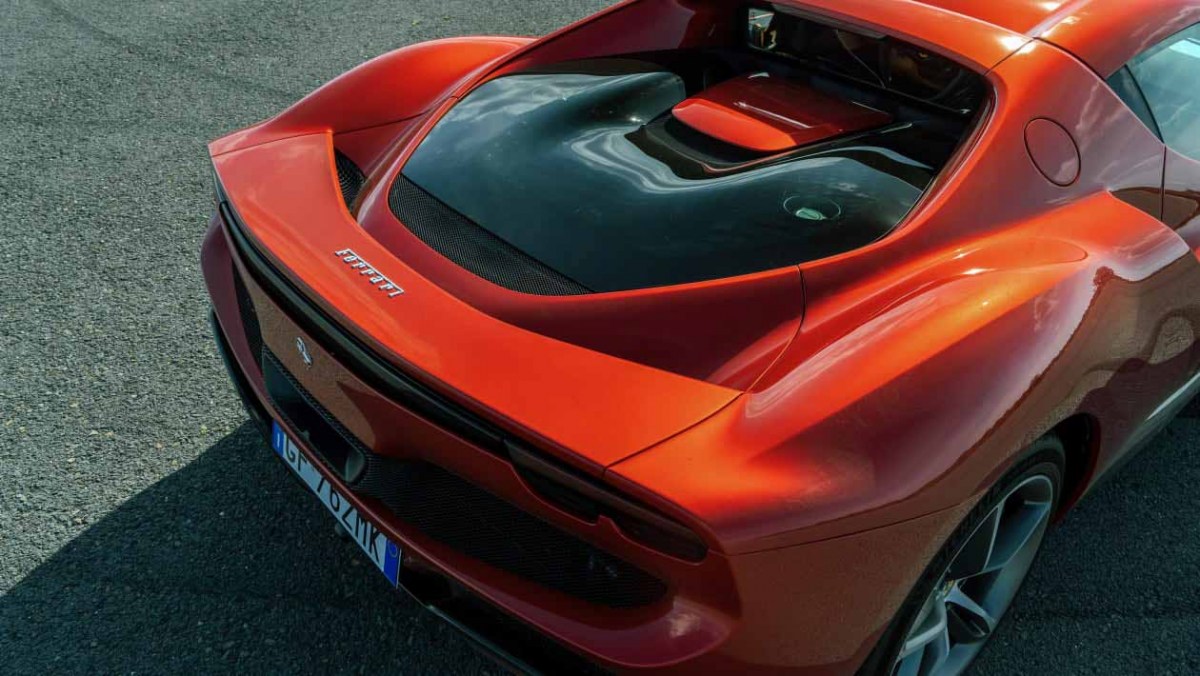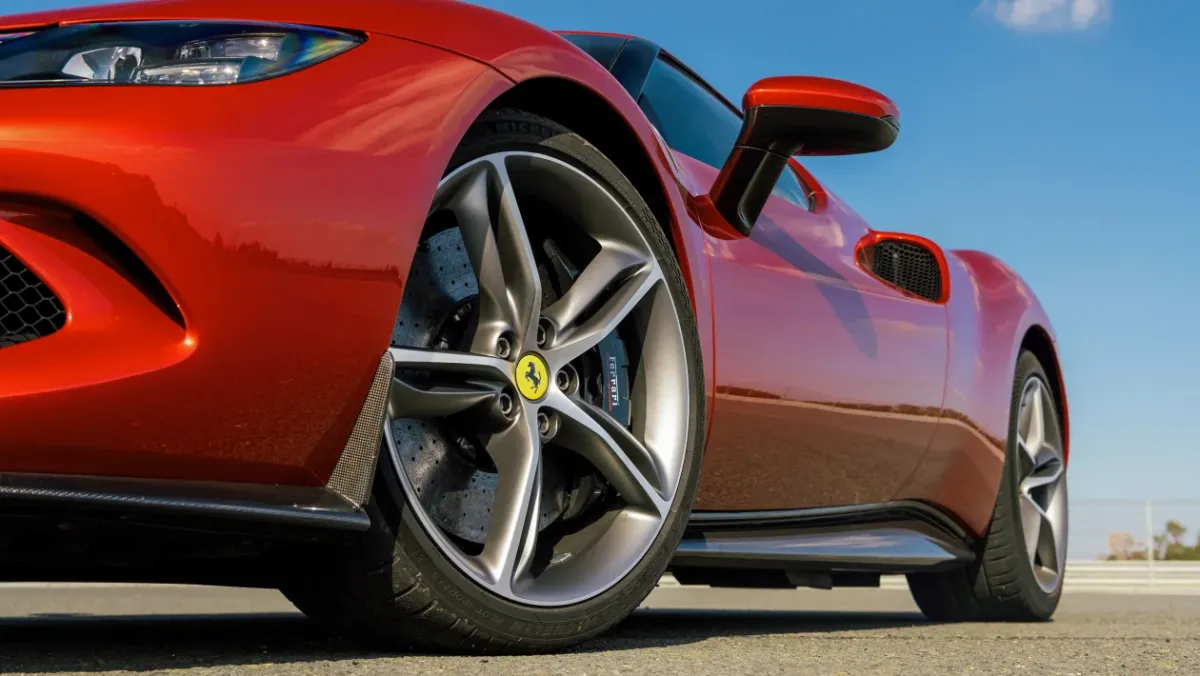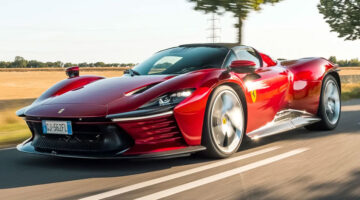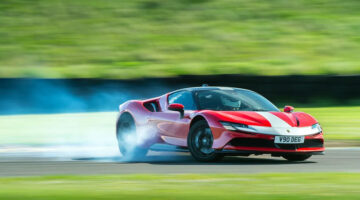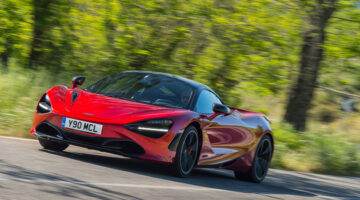Ferrari’s first V6-powered road car redefines the $262,000 supercar with blistering pace and an entertaining chassis
| Ludicrous straight-line pace, highly engaging dynamics | |
| Frustrating digital interface, weight |
A displacement of 2,992cc, a six-cylinder engine and a GT car with a hard roof… that’s what the name of Ferrari’s new supercar tells you, but there’s so much more to this car than just those elementary basics, – oh, and the small matter of 819bhp.
Did I just say 819bhp? It’s hard to look past such an awe-inspiring power figure, and it’s easy to find yourself wondering where this power escalation will end – and where you might use such performance in the first place. But that’s another story. With an all-new, 120-degree, twin-turbo V6 engine and an electric motor, powering the rear wheels only (unlike the SF90), the 296 GTB really does blow apart the current supercar conventions. The big question though remains, is it as fun to drive as it is undoubtedly fast?
> Ferrari SF90 Stradale 2022 review – driving the game-changing 987bhp hybrid flagship
The 296 GTB is the first V6-powered Ferrari road car (the delectable 246 GT Dino never wore the prancing horse emblem in-period), the first to feature a ‘hot-vee’ turbocharger installation, and it’s also a plug-in hybrid, with an EV-only range of around 24 kilometers. The little V6 is mounted low down in a new aluminium chassis, with 50mm taken out of the wheelbase compared to the V8-engined cars, and the occupants are sat very slightly further forward. The electric motor is good for 165bhp and 232lb ft; the V6 on its own, a stunning 654bhp and 546lb ft. The combined power is that 819bhp headline figure, but Ferrari refrains from quoting what the combined peak torque is, presumably due to the intricacies of how the engine and the electric motor work together, although it’s safe to say it will be ‘considerable’. All in, the V6 saves 30kg over one of Ferrari’s V8s and is coupled to an eight-speed twin clutch gearbox, while the battery pack – a long oblong structure – is to be found behind the seats.
It wouldn’t be a Ferrari without a suite of acronyms denoting sophisticated electronic chassis systems. For the 296, Ferrari has developed what it calls a six-axis sensor known as 6w-CDS that can measure both the acceleration and the speed of rotation on the X,Y and Z planes. It replaces the conventional yaw sensor, and in combination with the sensor mounted on the steering rack enables the car to know not only what the driver is up to, but also what the grip levels are like at the contact patch, working other systems like the Side Slip Control and active E-Diff to maximise cornering speed without harming stability and the security of the car. It also enables a new system called ABS-evo (good name there) in RACE mode and above that, via the brake-by-wire system on the 296, shortens braking distances but also improves braking performance when trail braking into a corner.
For the first time, Ferrari is using its active aerodynamics technology not to reduce drag, but to increase downforce. The firm quotes a figure of 360kg at 250kph, but up to 100kg of that is generated by the rear wing which deploys from the rear of the car. There are two radiators in the nose for engine and gearbox cooling, plus two further condensers for cooling the battery. Hot air is exited underneath so that it doesn’t interfere with the cooling air directed into the intercoolers along the flanks. The small apertures you see below the headlamps are for drawing in air to cool the brakes, while the wing integrated at the rear of the roofline helps to create a ‘virtual’ rear screen that channels air to the rear of the car as if guided by a surface. The majority of the 296’s downforce is generated under the car, where particular attention has been paid not just to channelling the air and the rear diffuser, but also to the height of the underbody off the ground to increase the effectiveness of the downforce generating surfaces.
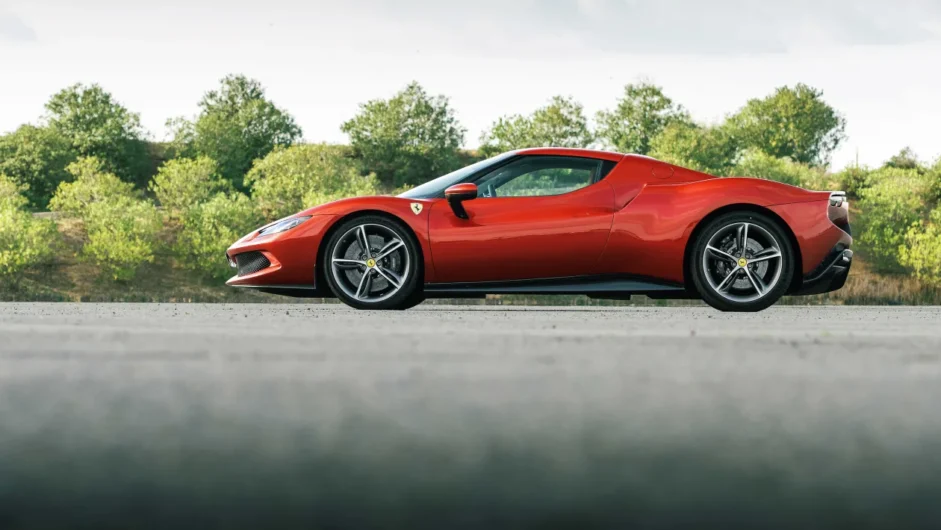
I haven’t mentioned how the 296 looks so far as it’s up to you to make that judgement, but having spent time with it ‘in the metal’ I happen to think it’s a very pretty thing indeed; quite unlike anything else, and obviously inspired by the 250LM of the 1960s.
The cabin architecture will be familiar to anyone who has sat in a SF90, for the 296 borrows heavily from that car. I struggle to get along with the purely digital interface and its complimentary haptic switchgear, liberally applied on the steering wheel and on more traditional Ferrari pods either side of the steering wheel. It is undoubtedly complicated, but then to be fair there is a lot of information to impart, but the worst of it is how simple operations sometimes require a second press after the first attempt hasn’t registered, or not knowing whether a press has been successful at all. Still, it still feels a special place to be; to get moving simply give a double press on the bottom of the steering wheel boss and then hook first gear. The 296 always starts off in Hybrid mode, which means it’ll move away on electric power alone unless you tell it to do otherwise via the haptic driver mode ‘buttons’ on the left side of the wheel’s boss, and as long as you don’t introduce too much throttle it’ll continue on purely electric power (as long as the battery has charge, of course). You can elect to ‘force’ the car into EV mode too, regardless of the demands you make of the powertrain, or there’s the further Performance and Qualifying modes. In these both power sources work together: in the former with a view to also keeping the battery topped up, while in the latter it’s ultimate performance and to hell with the battery’s state of charge.
Gliding quietly through villages is an unexpected pleasure, and the damping is so sophisticated that it’s a surprisingly comfortable place to consume miles; there’s even a reasonable luggage area in the ‘frunk’ up front (unlike the SF90). But what both you and I really want to know is what does it feel like with both engine and electric motor properly wound up? The clue is what happens when you plant the throttle at low revs in a high gear: the 296 simply bolts forward, with no lag, and makes you question for a moment while you’d even bother with gears, so potent does it feel. Still, there’s eight of them to play with, and an engine that revs to 8500rpm, and when you really uncork the 296 the effect is absolutely startling. As the numbers suggest, the rate of acceleration is of the hold-on-tight/nervous laughter variety, verging on the uncomfortable, but weirdly addictive at the same time. This is a seriously rapid car. It sounds nice, too, with plenty of turbo sound effects overlaying the tuneful V6 rasp.
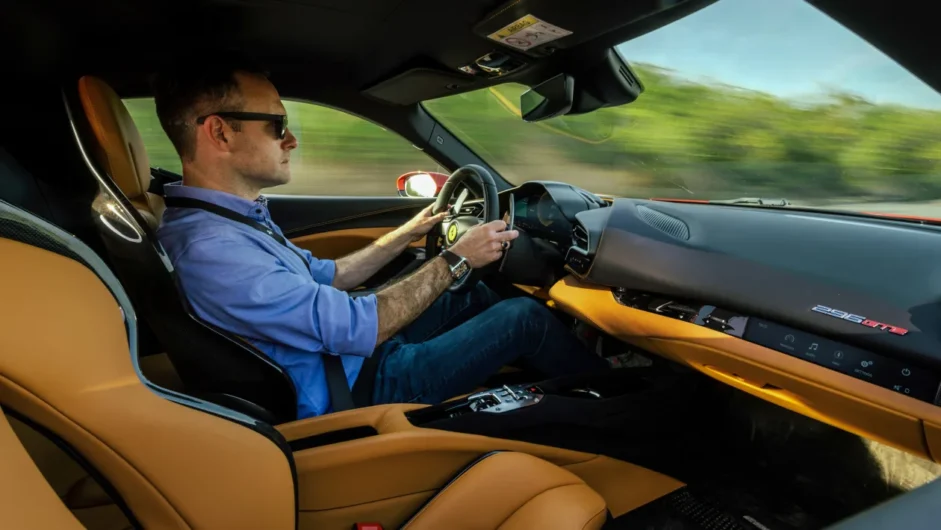
Yet what’s really impressive is how responsive the 296 GTB’s chassis is, and how Ferrari weren’t kidding when they told us that the aim of this car was to make it ‘fun to drive’. It feels highly agile without bordering on being nervous: the steering is typically light and fast, but there’s detail here too, and while the grip levels are very high as you might expect, so the car is also throttle adjustable in a way that can’t help but make you grin. It feels much lighter than its 1470kg (dry) weight figure would have you believe, and there’s a lack of inertia to the whole car that encourages you to work with it, making small inputs, and revelling in its accuracy and precision. The CT Off mode allows you to take amazing liberties with the accompany reassurance that there’s still an electronic brain far more intelligent than your own looking after you, but even with everything switched off the natural balance of the 296 means that it can be teased into oversteer in a way you’d never think was possible in a car with 819bhp. There, I’ve mentioned that number again.
We also got to drive the 296 GTB briefly on a circuit, and here the cars were all fitted with the Assetto Fiorano pack. It replaces the standard dampers for Multimatic items related to those used in GT racing, and also adds further carbon aerodynamic devices on the nose that increase front downforce by 20kg. There is also more carbon fibre in the cabin (such as the door panels) and on the exterior, contributing to an overall weight saving of 12kg, which becomes 15kg if you specify the optional Lexan rear engine cover. A further option if the Fiorano box has been ticked are the Michelin Pilot Sport Cup 2 R tyres, replacing the standard Pilot Sport 4S tyres. Fiorano cars can also be ordered with an exterior graphics package inspired by those seen on the 250LM back in the 1960s.
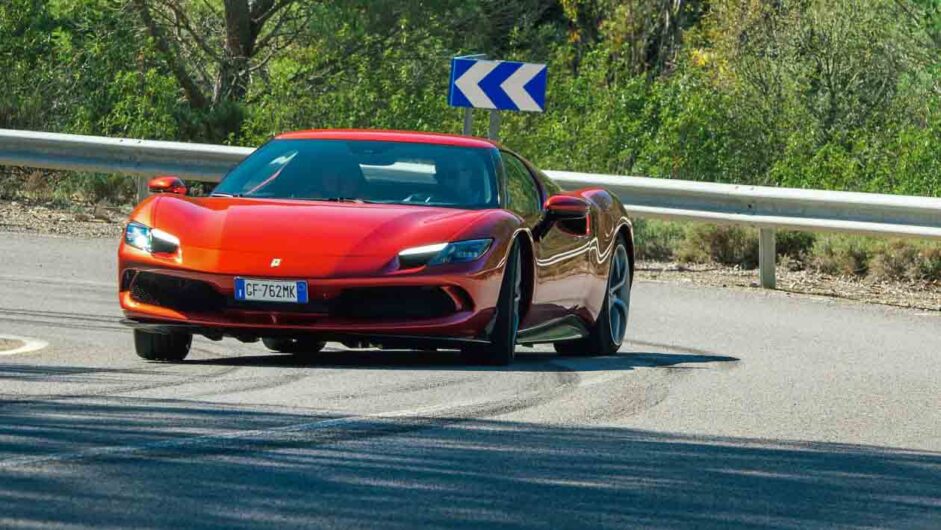
Naturally, the 296 has the ability to shrink even a lengthy start-finish straight, but what becomes even more obvious is how much of a sharp instrument it is. The power is there to break traction at the rear at many points around the lap, but the 296 is also highly sensitive to braking and steering inputs, and you soon learn that being precise with the controls brings the greatest reward. The laps are fast, but they’re also an engrossing experience that leaves us wanting more.
When a new car is so heavily laden with technology there’s always the risk that it’ll turn out to be less than the sum of its parts. It’s something on evo we found with the SF90, which dazzled with its power output but unnerved us with its hard-to-read driving characteristics. But the 296 GTB is something rather different: it feels much more organic, and its mix of power and engaging dynamics strikes a real sweet spot, redefining what a $262,000-ish supercar (ok, it’s $321,000, but…) can be.
This article originally appeared at evo.co.uk
Copyright © evo UK, Autovia Publishing

